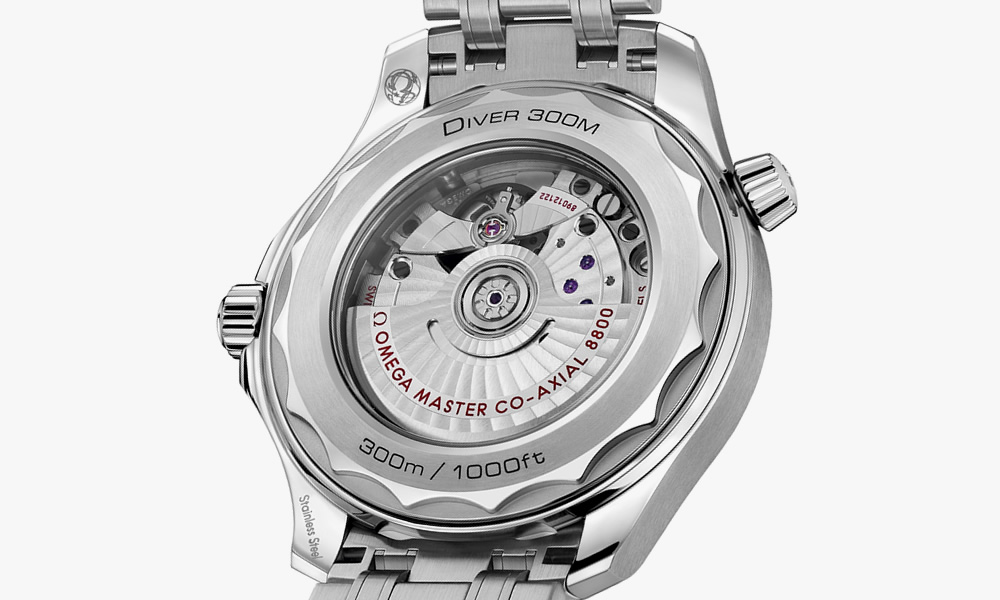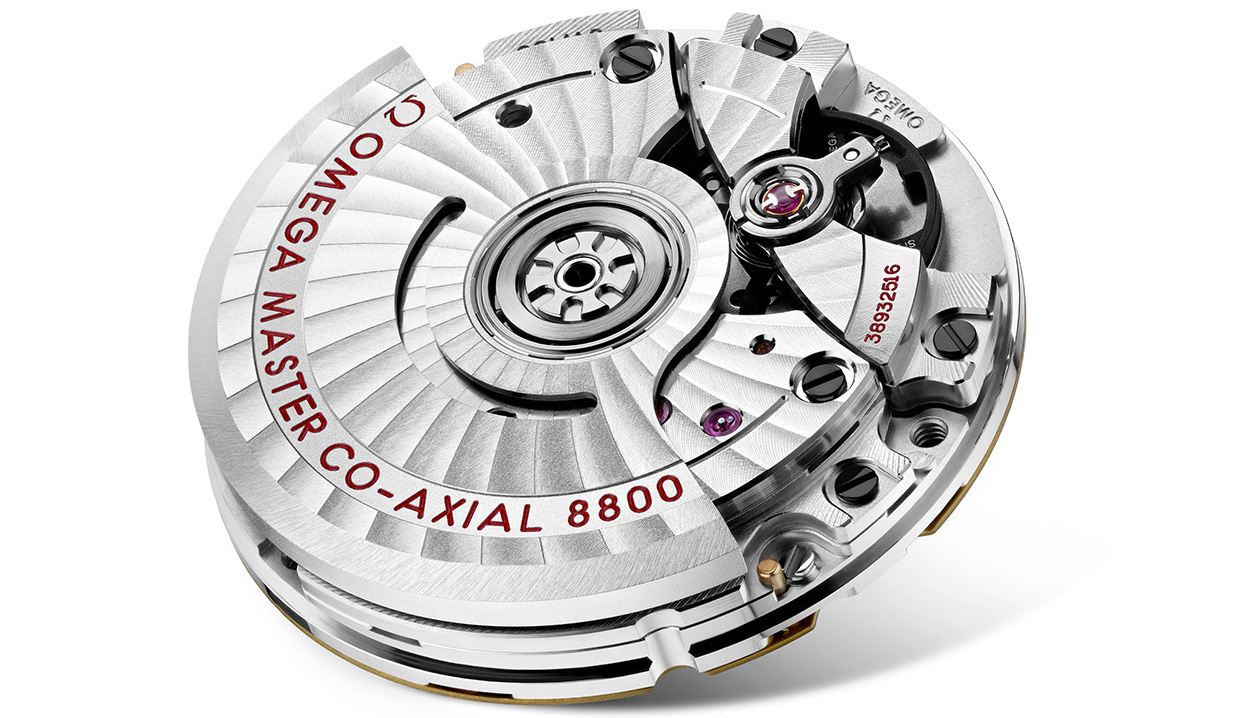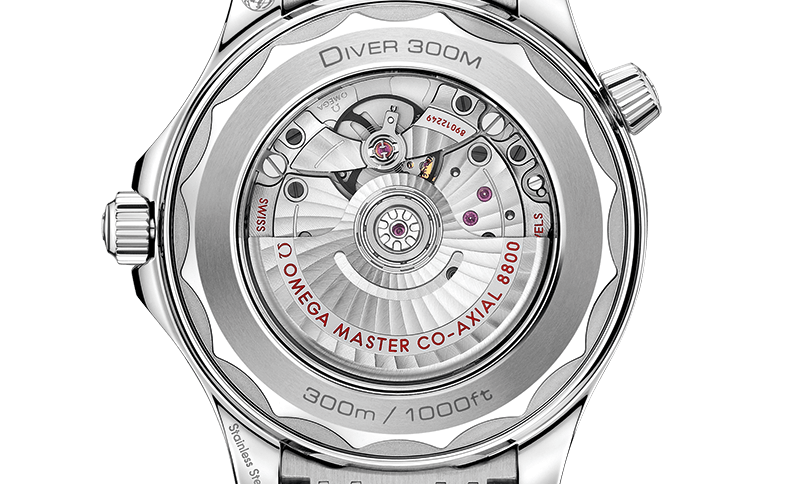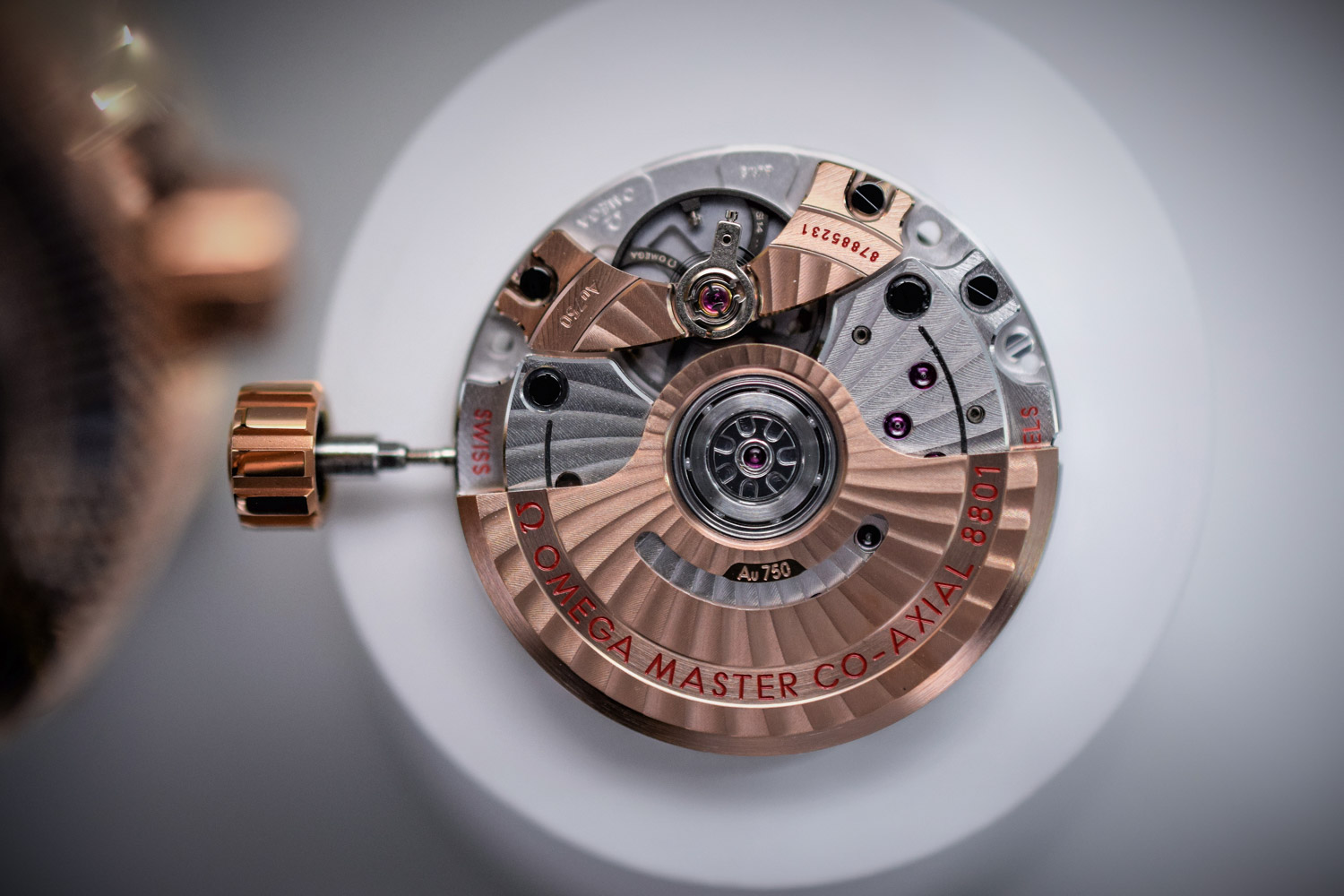
Omega Caliber 8800 & 8801 Specifications & Guide
Omega is a watch brand that has consistently improved the movements used in its watches over the years. Previously Omega used a lot of externally made movements such as ETA and then modified them to suit their needs and wants.
But as you know, investing in research and development for making your own in-house movements is something that is appreciated by watch enthusiasts and the whole industry. Partly because it shows that it is actually a watch manufacturer and not just a company that only assembles watches. But also it means that you are a serious watch company looking to innovate and push the watch industry forward.
Because of this, Omega has gone more and more in the direction of developing its own in-house movements. Today, the vast majority of Omega collections are equipped with in-house movements, developed by Omega. In this article, we are going to look closer at one of these calibers, the Omega Caliber 8801 and Omega Caliber 8800. The reason we focus on two movements is that these two are identical at their core, but the difference is that the 8801 features an 18K gold rotor.

The Omega caliber 8800 is either a new caliber or a reworked version of the existing caliber 8520 which was used in the second generation of the 37.5mm PO.
It features a barrel that enables a power reserve of 55 hours. As you would expect, it has a quickset date function. The caliber 8800 has a ball bearing in the rotor axel. It is an 11.5 ligne movement that is 4.60 mm tall.
Omega caliber 8801 vs 8800
Before we go into the details, we need to understand the differences between these two calibers.
The new Omega Seamaster Diver 300M was released at Baselworld in 2018. This watch features Omega’s new in-house caliber 8800. Both the steel and the steel and gold versions are equipped with this movement. The full gold version, reference 210.62.42.20.03.001 joined the collection a little later, in 2019, and it is the full gold versions of the Seamaster Diver 300M that is equipped with a 8801 caliber.
The difference?
The Omega caliber 8801 features an 18K Sedna™ gold balance bridge and an oscillating weight with Geneva waves in arabesque, unlike the 8800 caliber which is not made with precious metal. Sedna gold is Omega’s own gold alloy that blends gold, copper, and palladium and ensures that its rose gold luster is long-lasting.

Apart from that, the two movements are identical and share the same specifications. So let’s look closer at the specifications of the Omega caliber 8800 and 8801.
Omega Caliber 8800 and 8801
The caliber 8800 is a self-winding movement with a co-axial escapement. The rotor is winding in both directions.
Each movement is tested according to the Master Chronometer certification process approved by METAS. It has a power reserve of 55 hours and is resistant to magnetic fields reaching 15,000 gausses. It has a free sprung-balance with silicon balance spring,
The caliber 8800 has a rhodium-plated finish with Geneva waves in arabesque. Both calibers beat at 25,200 vph and have 35 jewels. The beating of 25’200 vibrations per hour is rather unusual, but omega determined this to be optimal. The caliber is 26mm / 11.5’’’.

Antimagnetic
The anti-magnetism of 15,000 gauss is rather impressive for a movement that is used in a dive watch. This is made possible in particular thanks to several parts being made in an anti-magnetic material. This includes staff and pivots made of NivaGauss, anti-shock system (Nivachoc) made from an amorphous material, and more.
Caliber barrels
The barrels of the movement are DLC coated inside to reduce friction and increase service intervals.
Silicone technology
The balance spring uses silicone technology (Si14), and the purpose of this is to make the movement more anti-magnetic. Silicone also increases stability and resilience.

The finish of the movement
The finish of the movement is rather impressive considering that it is mass-produced and many parts of the production are managed by machine. It is particularly the rotor that stands out with its oscillating weight with Geneva waves in an arabesque pattern.
Omega caliber 8800 & 8801 quick specifications
- Diameter : 26mm / 11.5’’’
- Power reserve: 55 hours
- Quickset date function
- Jewels: 35
- Frequency : 25’200vph
- METAS certification





the rotor of the 8801 is sedna gold, but not to mention what material is the rotor of caliber 8800 made of? I have the doubt of knowing what material they used to give inertia to the winding of the 8800
Hi,
Omega doesn’t specify but the rotor of the 8800 is most likely made of regular steel.
Kind regards,
Millenary Watches